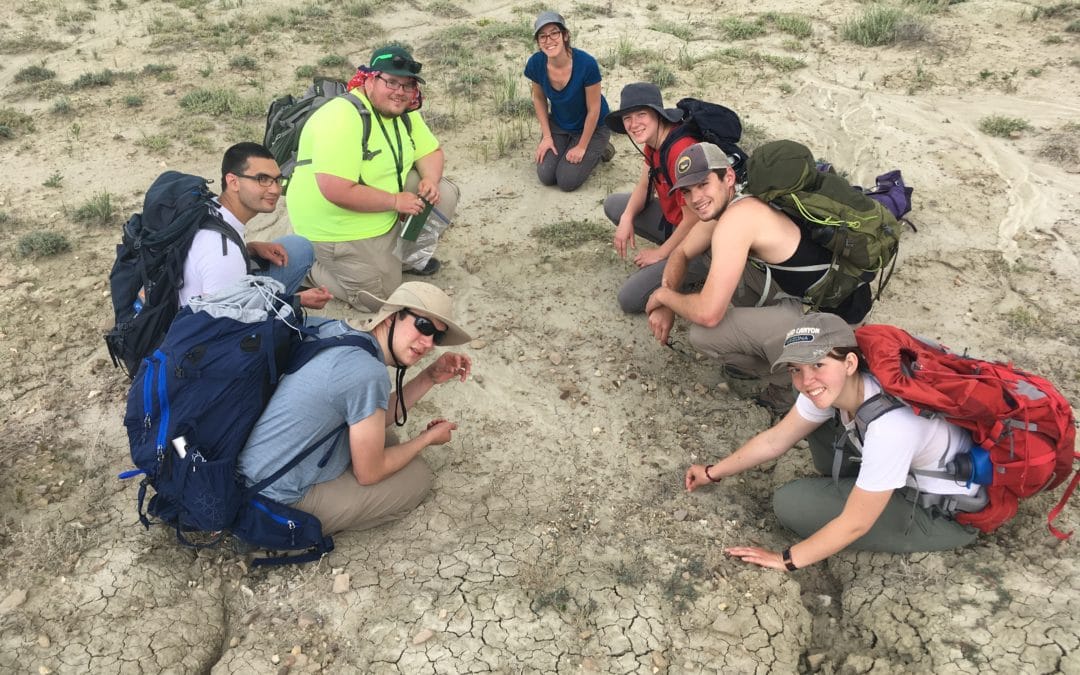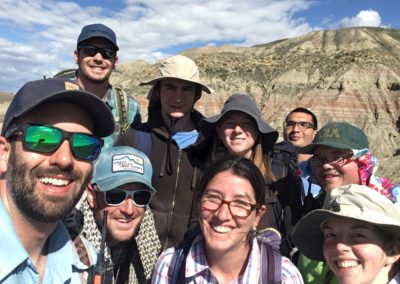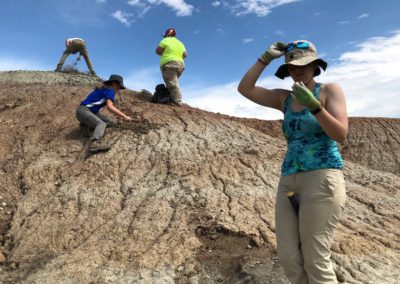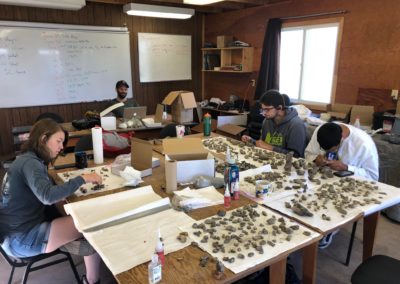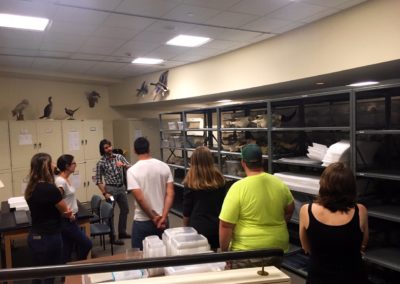Team Wyoming on the outcrop in Wyoming.
The Keck Wyoming team made up of Michael D’Emic (Adelphi University), Simone Hoffmann (New York Institute of Technology) and Brady Foreman (Western Washington University), as well as six students, Grant Bowers, Michael Ford, Richard Gonzalez, Danika Mayback, Emily Randall, and Isaac Sageman spent four weeks in the northern Bighorn Basin, Wyoming collecting 56 million-year-old fossils and placing them into geological context. We also had the pleasure to join Amy Chew and Ken Rose for a few days at their field site in the southern Bighorn Basin, visit the Illinois State University’s Geology Field Camp lead by David Malone, and get a behind the scenes tour at the Draper Natural History Museum in Cody by their Assistant Curator Corey Anco. Our field effort included collecting more than 100 crocodiles, turtles, and mammal fossils, including the early mammal Coryphodon, the first mega-herbivore after the Cretaceous-Paleogene extinction and the focus of our study. We already prepared 10 Coryphodon specimens in our field laboratory for histological thin sections. Grant Bowers and Danika Mayback will be using these and other histological samples to study changes in growth in Coryphodon through a major global warming event, the Paleocene-Eocene Thermal Maximum (PETM). Together with Richard Gonzalez’s project on finding relevant proxies for body mass estimates, these studies will help understand the growth mechanisms underlying body size evolution of Coryphodon in relation to environmental change. We also measured 15 stratigraphic sections and collected more than 90 sediment samples for isotope and pollen analysis from our new Coryphodon sites. Isotopes analyses conducted by Isaac Sageman will help place our localities in relation to the PETM and provide proxies for temperature and precipitation. Pollen analyzed by Michael Ford will help evaluate changes in plant distribution (and potential food resources of Coryphodon) throughout the PETM. Emily Randall will be investigating soil morphology in our stratigraphic sections. We plan to present this work at the spring GSA Rocky Mountain Section meeting in Utah in 2020.

